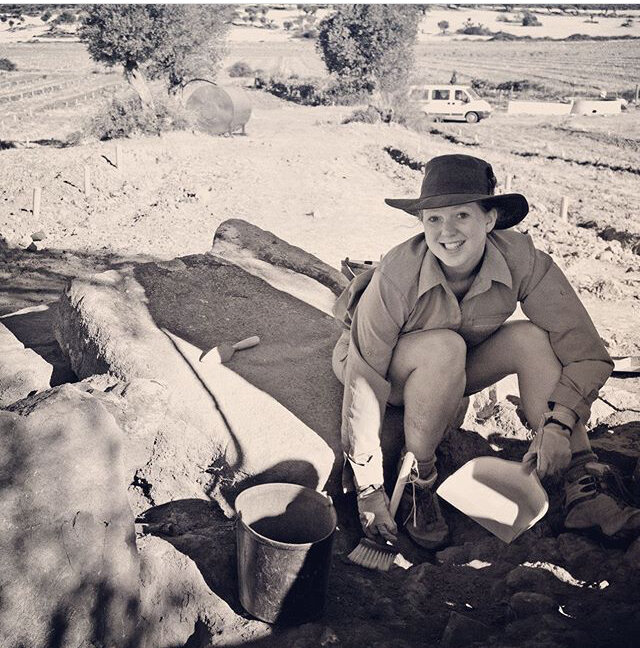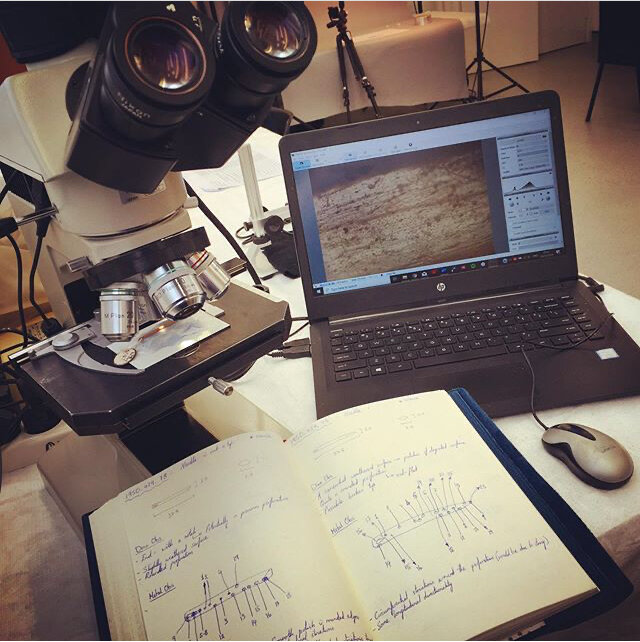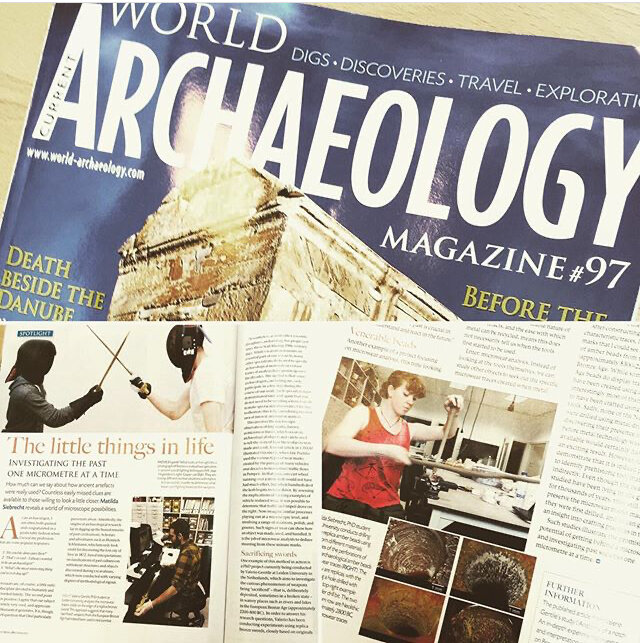What has the past ever done for us?
Ash’s Foreword
This month’s community blogger is Matilda Siebrecht, archaeologist and journalist. You might be familiar with Matilda’s work through her Instagram page @Stone_Age_Monkey or her work with EXARC. I’m so thrilled to have Matilda join us for our July’s Community Blog post. I met Matilda through our Instagram handles and we bonded over our shared love of public archaeology and enigmatic carved stone balls! Since starting this Blog Space, I’ve met so many lovely and enthusiastic folk, like Matilda, including archaeologists, makers, and creators who engage so passionately about archaeology!
Initially, this blog post was going to focus on something a little different but when Matilda wrote this piece and sent it to me, we both knew this had to published. With the current climate surrounding archaeology becoming heated and rocky, particularly within realm of public archaeology, it felt extremely important to discuss how the past effects us in the present. What does it do for us? How can it become more accessible? And how does it fit within our own narratives of the wider, modern world?
Take it away, Matilda!
My original plan in this blog post was to tell you all about my area of archaeological specialisation: microwear analysis. I definitely still do plan to do that in the future, but after the events of this week I wanted instead to talk a little bit about the importance and relevance of archaeology within modern society.
Background
For those of you who have no idea what I’m talking about, let me give a bit of context. Last year, the archaeology department at the university of Sheffield was told that plans to have three new full-time posts would have to be scrapped due to the pandemic. At the start of the following academic year, the department asked if these posts could be reinstated as they were understaffed, and as a result of this and the government announcement that they were cutting 50% of humanities funding at British universities, the entire department was put under a full review, with the results being one of these three options: 1. Support and invest in the department to ensure the future of archaeology at Sheffield (honouring the previously approved new posts). 2. Discontinue archaeology as a subject at Sheffield and make all the staff redundant. 3. Discontinue archaeology as a coherent subject, retain aspects of archaeological research and education (human osteology and cultural heritage), and make remaining staff redundant.
Firstly, the fact that Sheffield archaeology department was being put under review at all was astounding. They are one of the top archaeological institutions – not just in the UK but arguably in the world – and provide training essential not just for academic research, but also for cultural resource management, which is a major part of all commercial infrastructure development projects. The reaction to this initial review was therefore already one of outrage, and you can probably imagine the reaction this week to the news that the university has decided to go with option 3. This essentially means that only a handful of archaeological subjects will be retained, but will be moved to other departments, and a lot of the highly skilled and experienced staff will be made redundant. This also means that people who were hoping to continue their postgraduate education at Sheffield after their current archaeology degree will have to look elsewhere.
Now, why is this such a big deal? I hear you say. After all, it is just one university department - admittedly an incredible essential one to the future of British archaeology, but still just one. But that’s the thing; it’s not just one. Chester University had a similar scare, although happily they survived their review, and several other institutions across the world have had departments cut or tenured staff made redundant. And all this is happening because governmental funding bodies do not understand the value and relevance of archaeology to modern society, and so are scrapping it as a “non-essential” subject.
Why is archaeology important?
Considering that most people don’t really understand what it is that archaeologists do, this opinion is hardly surprising. I tell anyone I’m an archaeologist and immediately get deluged with stereotypes and inaccuracies; dinosaurs, Indiana Jones, obsession with digging holes, knowing everything about the ancient Egyptians, the list goes on… When I do start telling people more about what I actually do, they are amazed. “I didn’t even know that you could do that as a job!” But more on that in a later post... The point I’m trying to make here is that, if the general public think that we’re just a bunch of dinosaur-obsessed Indiana Jones wannabees who dig holes all day, then of course they’re not going to consider our area as one that deserves funding. After all, funding should go to those subjects that are relevant to modern society (fair enough). This is why I am so in favour of blog sites such as this excellent one offered by Ash – it provides archaeologists like myself with the perfect platform to share what they do, and highlight why archaeology is important and deserving of recognition.
Let’s start with the basics. The good old adage “you can’t see where you’re going unless you know where you came from” is particularly apt when considering archaeological research. In simple terms, understanding our heritage and how we developed as a society provides a big part of our own cultural identity, and also helps us to understand how we develop further in the future. But there is so much more to it than this. Archaeology encourages the reassessment of ideas about our past that have laid the foundation for all kinds of modern-day assumptions. You have likely heard the phrase “you can’t understand someone until you’ve walked a mile in their shoes”. Well, in archaeology, this is significantly more complicated. After all, the people that we are trying to understand often lived thousands of years ago, and might not even have worn shoes. In order to fully understand the interactions and perspectives of people in the past (if that is even possible!), archaeologists therefore have to completely remove themselves from the biases of their modern context. Even something simple like “well this tool requires a longer amount of time to use therefore likely wouldn’t have been preferred” is an extremely modern perspective based in ideas of industrialisation and capitalism where “time is money”, but who’s to say that prehistoric people would have had the same sense of urgency? This approach to the study of society means that anyone who has studied archaeology is (or should be) generally more likely to think outside the modern-day stereotype box, and thus also engage with and question many assumptions from the present day.
As an example, let us consider the Cheddar Man; Britain’s oldest complete skeleton, dating back to the Mesolithic Period (around 7000BC). Although the skeleton was first uncovered in 1903, DNA analysis conducted in 2018 led to some fascinating insights, the most intriguing of which is that the Cheddar Man would have had pale eyes, but dark skin. Now, as you can imagine, this immediately sparked a wave of controversy throughout the UK. After all, aren’t ‘native’ Brits pale skinned? We are a northern culture, and one of the basic assumptions about our past was that white was the original British skin colour. However, this research by UCL and the Natural History Museum turned this assumption completely on its head. Very often, archaeology has been used to ‘prove’ the superiority of a particular type of person within a particular modern culture (a common example is that of Viking history used to promote Aryanism in the Nazi regime), and so it is essential that research such as that conducted on the Cheddar Man continues, in order to avoid the use of the past to promote harmful ideologies in the present day. By revealing the diversity of British prehistory through the Cheddar Man research, archaeology has also been able to engage with discussions related to racism and diversity in modern British society. (And if you don’t think this is a pertinent issue in the UK right now, then you clearly missed all the fallout and hate following the recent European football final…)
This is just one example to show why archaeological research, as well as the thought processes that are actively encouraged through pursuing archaeology as an area of study, are extremely relevant in modern day society. Through looking at our past, we can engage with negative stereotypes or biased assumptions in the present, and encourage an open discussion of how our society can best develop further. In candle terms: by illuminating the events of our past, we can allow more light to be cast on the progress of our future.
If you wish to know more about the issues facing archaeology in the UK at the moment, please check out the Dig4Arch campaign or follow their hashtags #dig4arch #NotRedTape on any trending social media sites. We can only just skim the beginnings of how important archaeology is to the wider community, so please check it out and support if you can. You can follow them here:
Twitter: @ForArchaeology
Matilda also has some great links on her socials about experimental archaeology, public archaeology, and some great prehistoric crafting ideas. You can follow her here:
Instagram: @Stone_Age_Monkey






